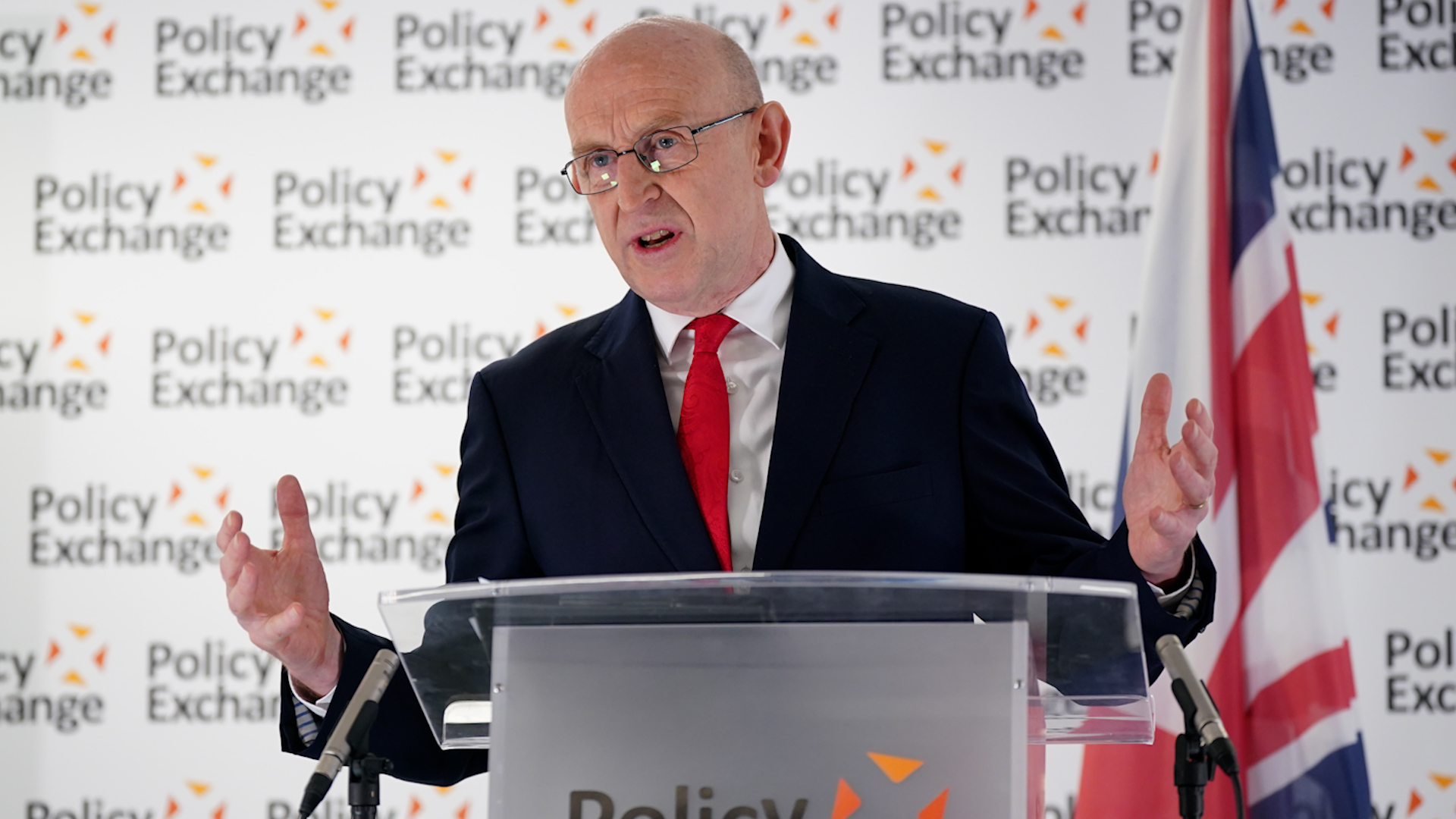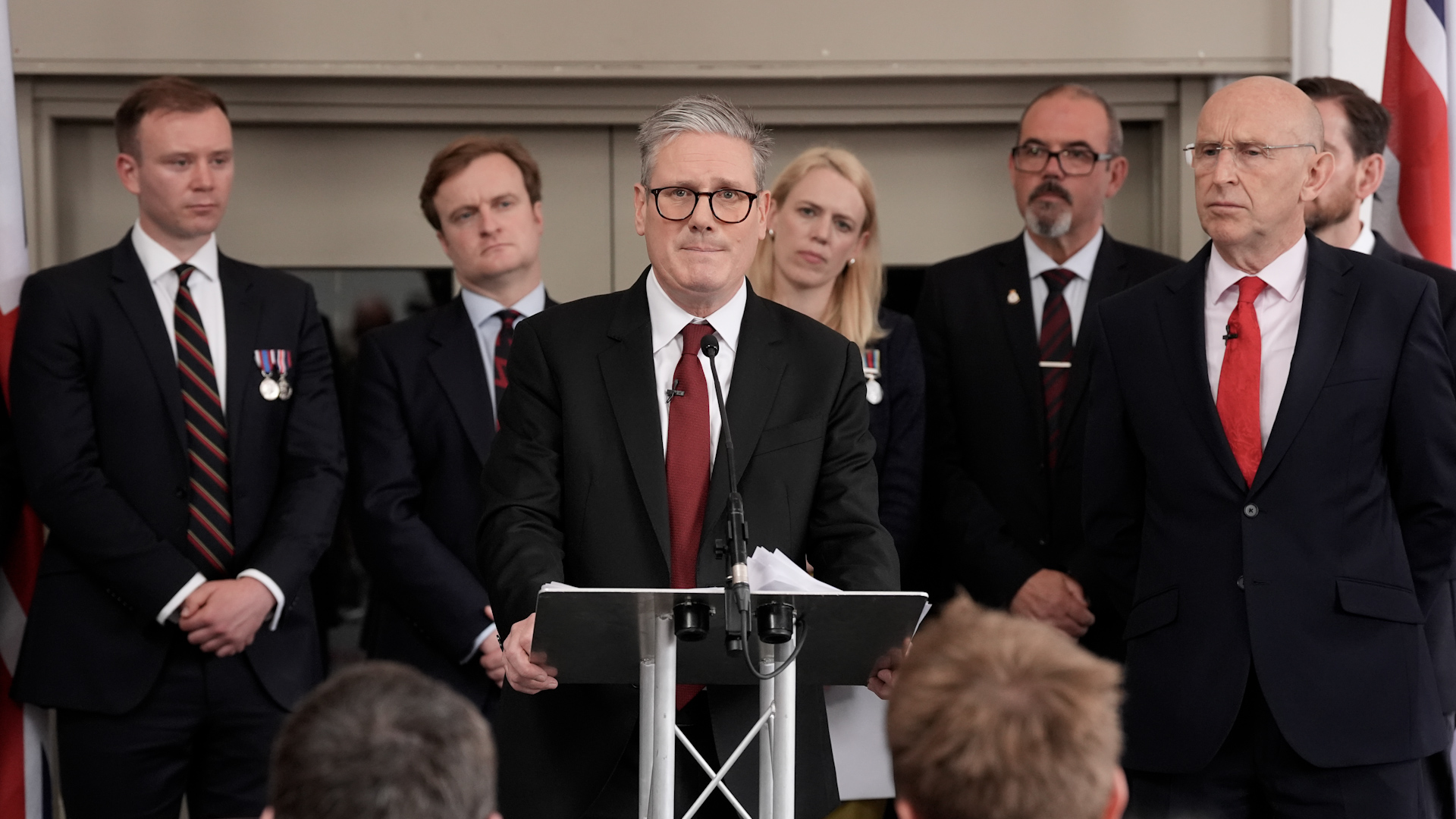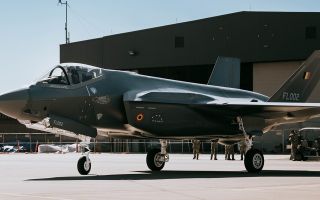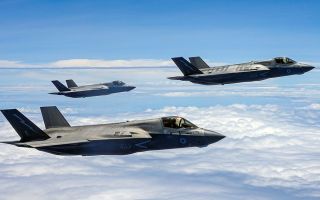
Labour's little-reported plan for defence outlines need for accountability and coherence

Recently retired Royal Navy Commodore Steve Prest was Deputy Director of People Change in Navy Command HQ before he left the service.
With the July 4 general election on the horizon, party manifestos are being published with multiple promises and policies they will look to implement if they take power.
Cdre Prest is far more concerned with how defence will be organised, and how the business of the MOD will be conducted.
The doughty readers of Forces News, seized by the excitement of the general election campaign, will no doubt have been poring over the party manifestos published in recent days.
But, just in case anyone missed it, the Labour Party manifesto contained the promise to establish a "fully-fledged" national armaments director (NAD) in the Ministry of Defence.
In his speech to the Policy Exchange thinktank earlier in the year, shadow defence secretary John Healey announced this policy initiative.
It may have come as something of a surprise to the current national armaments director, the chief executive officer of Defence Equipment and Support (DE&S), Mr Andy Start.
To be fair to Andy, he wears this 'hat' for the MOD, but his day job is running a large arm's length body of the Ministry of Defence, which delivers equipment and support services to the Royal Navy, British Army and Royal Air Force.
There are some 12,500 people who work for DE&S and they have a vast portfolio to deliver, spending about £13bn a year of taxpayers' money to do so.
He doesn't struggle to fill his days, but to be relieved of these duties, especially representing the UK in Nato's committee of NADs, will reduce the broader influence of his post.
The NAD, it is proposed, will be responsible for leadership in procurement and for ensuring that the Armed Forces have the capabilities needed to meet defence's plans and operations.
They will need to rise to the challenge of procuring and innovating at a pace that matches increasing and diversifying threats while aligning defence procurement across all five domains to cut out waste and duplication.

In addition, they will need to secure Nato standardisation and improve collaboration with allies, drive export campaigns and deliver a new defence industrial strategy.
I wonder what they'll do after stand-easy each day?
The DE&S will, according to Mr Healey, continue to perform its role as the technical and commercial expert for delivering and executing the equipment and support aspects of the Defence Programme. The NAD will direct and DE&S will deliver.
And so the justification for a beefed-up NAD isn't a criticism of the incumbent, rather that defence procurement is seen to need stronger and more strategic leadership from the centre.
His perception is that competition between the Armed Forces for resources is a source of incoherence and inefficiency in the MOD's procurement system.
In this, Mr Healey is right.
The current defence operating model resulted from the implementation of recommendations from Lord Levene (a former NAD himself) whose report on defence reform was published in 2011.
This report recommended the creation of a small, yet more strategic head office, with greater freedoms and authorities delegated to the service chiefs and their 'front line commands'.
Now I'm not claiming to be a latter-day Nostradamus, but my defence research paper (written in 2013) showed that the post-Levene model of defence would drive exactly the behaviour described by Mr Healey as service chiefs positioned themselves to maximise their share of control over resources and their professional jurisdiction.
The paper is in the Joint Services Command and staff college library if anyone is really interested or is having trouble sleeping.
But the overarching point is important.
By delegating the responsibility for capability planning and force design down to individual service chiefs, there is inevitably going to be a concentration by them and their teams on the things that they are responsible for delivering.
No doubt they all consider themselves to be good citizens in defence, doing the right thing by their fellow service chiefs but, first and foremost, they are champions of, and held accountable for, their own service.
And they behave as such. So would anyone in that system. It's a feature of the system as designed and leads to inevitable incoherence.
Curiously, a key driver for Lord Levene's recommendations was "the department's over-extended programme, to which the existing departmental management structure and behaviours contributed".
This is not a million miles away from some of the justification given by Mr Healey for the recentralisation of authority now! Perhaps the problem isn't the balance between centralisation or decentralisation of authority, therefore, but something else.
Perhaps Mr Healey is right that it is the lack of clear accountability and coherence that is the issue and therefore a NAD is the answer. Perhaps.

In the current model, the task of bringing strategic coherence to capability planning and delivery is vested in the Deputy Chief of Defence Staff (Military Capability) who is responsible for strategic force development and acts as the Defence Authority for Capability Coherence.
He is also responsible for the capability planning and delivery of head office-retained strategic equipment programmes and is the MOD-level lead for international engagement on capability development issues.
It is not clear whether the Deputy Chief of Defence Staff (MilCap) role will transmute into the NAD, be subordinated to it or find itself in the new Military Strategic HQ.
The Military Strategic HQ is another manifesto commitment and, according to Mr Healey, a "week one, day one" action to implement.
It is also to be created in MOD under the authority of the Chief of the Defence Staff, to whom the service chiefs will report and be directly accountable – including for budget delegation, Mr Healey says.
How the Military Strategic HQ and the NAD will work together to determine what and how is to be procured is unclear.
In Mr Healey's description, both have a role in providing the "clearer strategic authority over what the Armed Forces need".
No doubt much of the detail is yet to be resolved, but critical to making this work will be gaining absolute clarity over who is responsible to whom for what. And who is accountable.
An important principle is that one can only truly be accountable over decisions for which one has authority. So where will decision-making authority truly reside? That is the £50bn question.
Establishing who is accountable, who is responsible, who is to be consulted and who is simply to be informed about choices affecting the future size, shape and capabilities of the Armed Forces will need careful work and some delicate negotiation.
The same may be true of the responsibility for programme delivery. Currently, Senior Responsible Owners sit in the front line commands, responsible to their service chiefs, but accountable to the Permanent Secretary – through DCDC (MilCap) and the Director General (Finance) – for the delivery of their programmes.
They act as defence's clients for DE&S and co-ordinate and synchronise the work across different aspects of defence (the so-called defence lines of development) to deliver viable capabilities into operational service.
Equipment and its associated support are necessary elements of these programmes, but people, training, infrastructure, information and data (increasingly so) are all important components of the capability too.
For a few strategically important programmes, the SROs and their Programme Management Offices reside in the centre.
Perhaps this is the model for the future, with accountability for delivery (and the associated people) removed from the front line commands and held centrally.
Or perhaps they will reside in the front line commands (where they are best placed to co-ordinate the delivery of capability into service) but work to the NAD rather than the service chief.
Or perhaps they will have a foot in both camps, but it's hard to see how that would provide for "clearer strategic authority".
And then there is the question of the Defence Nuclear Organisation. The Chief of Defence Nuclear (CDN) has recently been established as an accounting officer in her own right, a Permanent Secretary/4* level official with commensurate authority.
The nuclear acquisition programmes, such as Dreadnought – the next generation of ballistic missile-carrying nuclear submarines – are some of the biggest in defence.
Will the NAD have authority over CDN's programmes and the Submarine Delivery Agency too?
It would seem absurd not to if the aim is to cohere all of defence procurement under a single authority, but it further complicates the landscape. It is not clear to me that this would be universally welcomed.
As I mentioned earlier, no one wants to give up professional jurisdiction or control over resources.
Moving authority for capability planning, acquisition and procurement from where it currently resides to a more centralised organisation, whether that be the Military Strategic HQ or the NAD's office, will come with challenges.
It will meet resistance.
There will be high emotion involved and much Machiavellian manoeuvring.
Of course, while much of this will be conducted behind closed doors, there will inevitably be leaks to the media and plentiful scuttlebutt as senior officials and service chiefs jostle for position and precedence.
For those of us who are interested in how defence is organised, and how the business of the MOD is conducted, it will be an interesting process to observe.
Pass the popcorn!







